With its low cost of living, high quality of life, and welcoming culture, the Philippines has become a top choice for expat retirees, but where in the Philippines is it best to retire to?
This guide, written in collaboration with our Philippines expert Elena Lazzaroni, will explore the best places to retire in the Philippines.
From the bustling metropolis of Metro Manila to the serene beauty of Dumaguete City, we will provide you with a comprehensive list of destinations that meet your needs.
So, let's dive in and discover your dream location in the Philippines!
Secure Peace of Mind with Best-Value International Health Coverage
International Citizens Insurance provide free, no-obligation quotes from the leading international health insurance providers with plans tailored to meet your needs. Trusted by thousands of expats worldwide.
1. Dumaguete - the friendliest place in the Philippines
If you are after a charming and idyllic lifestyle in the heart of the Philippines, Dumaguete is your place!
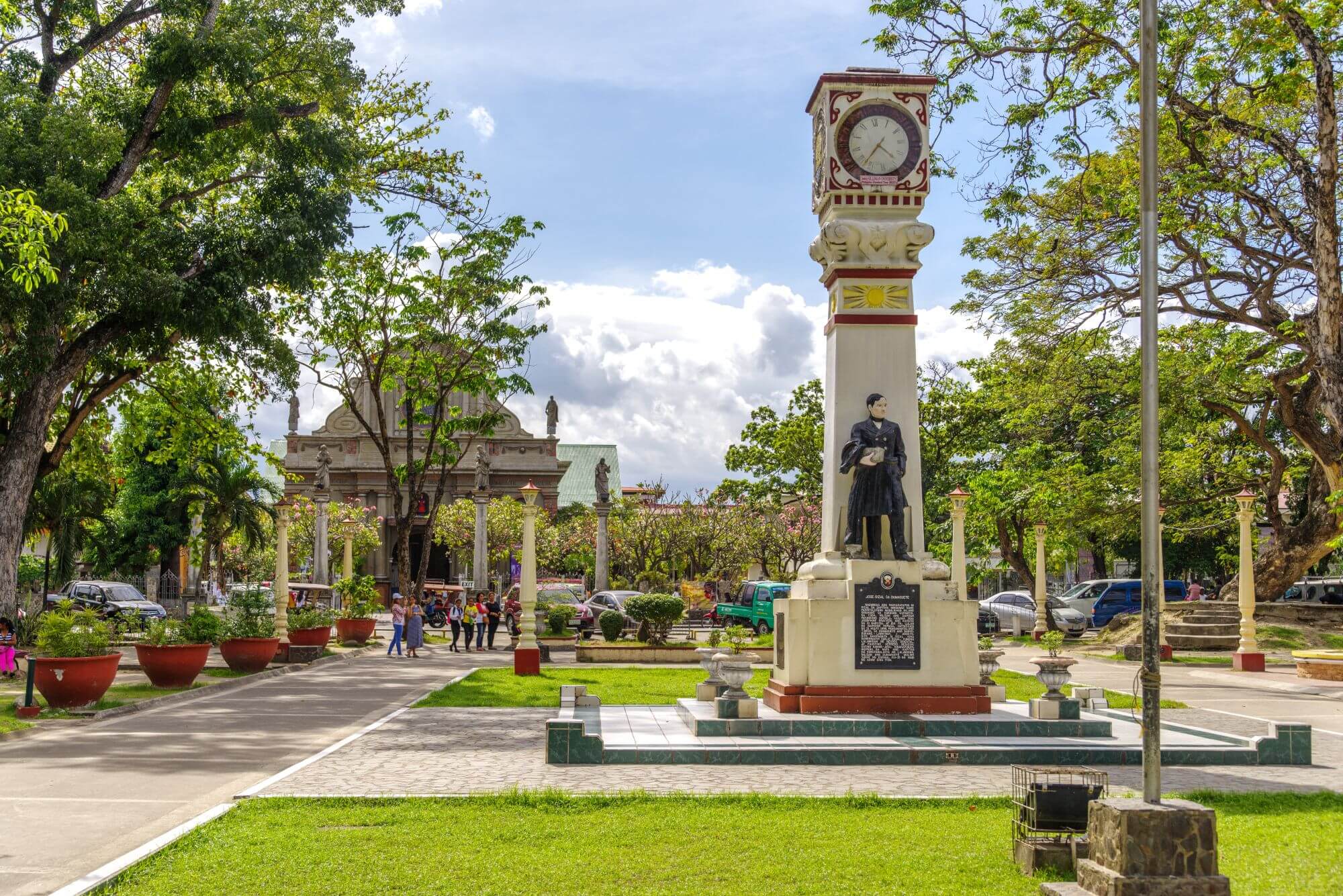
Known as the "City of Gentle People," Dumaguete, in the province of Negros Oriental, is very friendly and young at heart. It is highly regarded for its serene atmosphere, beautiful natural surroundings, and welcoming locals.
Cost of living
One of the main advantages of living in Dumaguete is the affordable cost of living. Accommodations, daily necessities, and dining options are generally more budget-friendly than those of larger cities in the country. If you go outside of the city, you will find it very affordable.
| Expense | Cost (USD) |
| Rent (1 bed apartment) | $200-$260 |
| Rent (3 bed apartment) | $280-$380 |
| Monthly Cost (no rent / 1 person) | $490 |
| Monthly Cost (no rent / family of 4) | $1740 |
| Dining Out (2 people) | $13-$18 |
*Data updated: July 2023
Healthcare
Dumaguete is known for its excellent healthcare facilities, including hospitals and clinics.
Negros Oriental Provincial Hospital is one of the main health providers in the province. The biggest medical facilities in the city are Silliman University Medical Center, and ACE Dumaguete Doctors, among others.
However, for really complex treatment, some people prefer to go to Cebu, where hospitals are better equipped and staffed to treat especially complicated cases.
Lifestyle
The city offers a laid-back and relaxed atmosphere, perfect for retirees seeking a slower pace of life. Its coastal location provides opportunities for beach outings and water activities.
The surrounding natural beauty, such as the nearby Apo Island, known for its marine biodiversity, offers a chance to explore and appreciate the wonders of nature.
Dumaguete also has a sizable expat community and a large proportion of the student population, as it houses several prestigious universities and colleges.
The city's university presence contributes to a dynamic cultural scene with art exhibits, theater performances, and festivals.
2. Makati - for the most cosmopolitan retirement
Makati offers a unique blend of convenience, comfort, and a cosmopolitan lifestyle in the heart of Metro Manila.
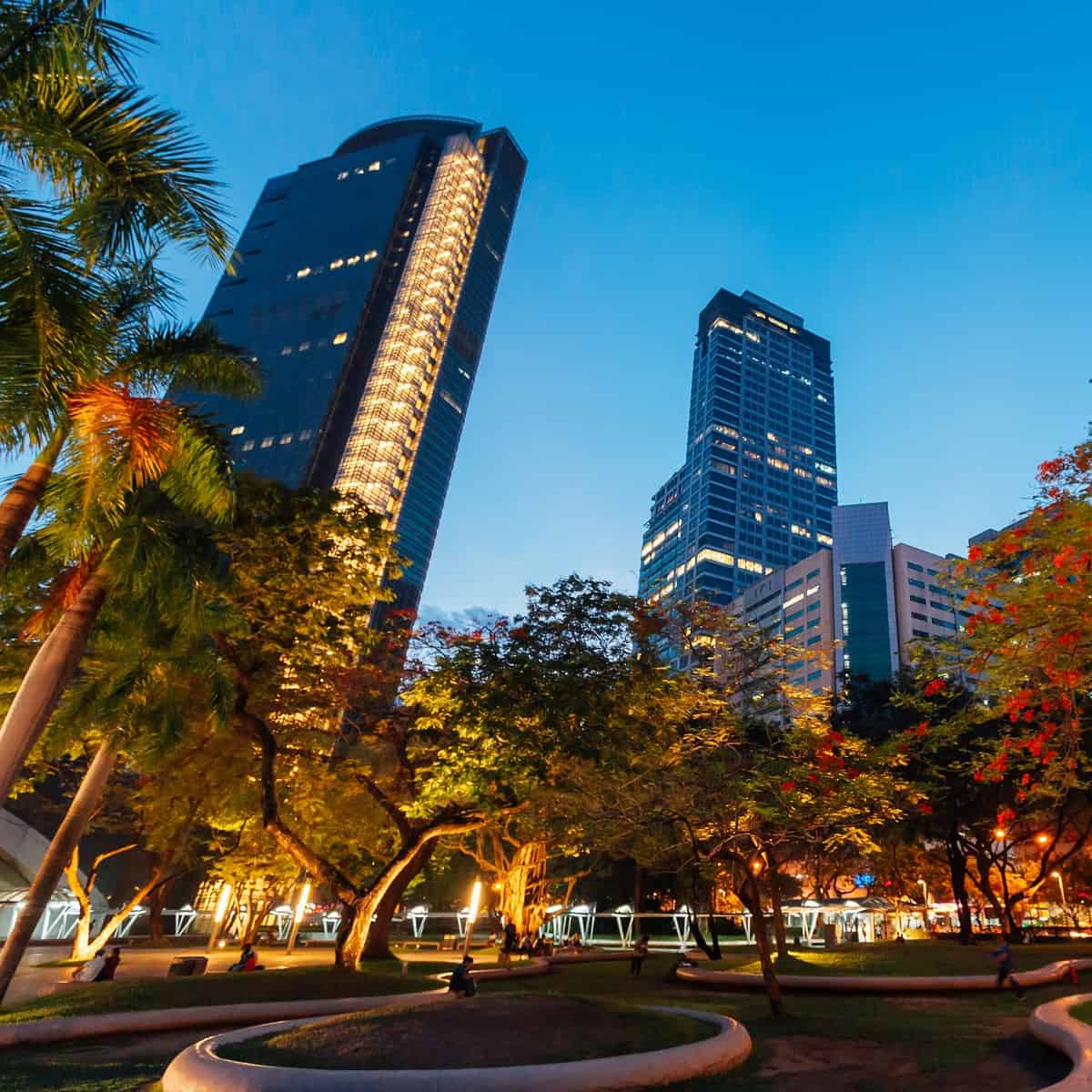
It is the financial center of the Philippines and has modern infrastructure, world-class amenities, and vibrant cityscape.
Cost of living
Being a modern city and a business hub, Makati isn't a cheap place to live. The Greenbelt area, which is particularly attractive for expats, might well be one of the most expensive places in the country.
| Expense | Cost (USD) |
| Rent (1 bed apartment) | $350-$610 |
| Rent (3 bed apartment) | $1410-$2420 |
| Monthly Cost (no rent / 1 person) | $700 |
| Monthly Cost (no rent / family of 4) | $2320 |
| Dining Out (2 people) | $17-$80 |
*Data updated: July 2023
Healthcare
Living in Makati, you will get access to excellent healthcare services and top-notch medical staff. Makati is home to several world-class hospitals and medical centers. The biggest hospitals are Makati Medical Center, St. Luke's Medical Center, and Asian Hospital and Medical Center.
These hospitals offer state-of-the-art facilities, advanced medical technologies, and highly skilled medical professionals.
Other notable hospitals in Makati include Ospital ng Makati, Medical Towers Makati, and Healthway Medical.
Lifestyle
Living in Makati as a retiree, you will get easy access to essential services and facilities: top-notch healthcare institutions, numerous shopping malls, supermarkets, specialty stores, entertainment, leisure facilities, various art galleries, museums, and theaters.
Shopping malls are abundant, with five complexes next to each other in San Lorenzo.
The dining scene is varied and pretty much global, from local cuisine to anything you can only fancy served in a variety of spaces, from swanky restaurants to smaller bistro-sized cafes.
The city offers a vibrant nightlife scene, with upscale bars, lounges, and entertainment venues.
Parks and green spaces are also present, with Greenbelt and the Ayala Triangle Gardens being the most prominent.
It is the most optimal location for frequent travelers. It is a major transportation hub in Southeast Asia, offering excellent travel connections.
The Ninoy Aquino International Airport (NAIA) provides direct flights to various destinations worldwide.
Besides, the city's central location allows convenient travel within the Philippines and neighboring countries for weekend getaways or business trips.
Of course, Makati has its drawbacks. All these wonders of urban life come with the usual downsides of traffic congestion, particularly during peak hours, air pollution, and higher crime rates usually associated with city living.
3. Baguio - the best location for a cooler climate
If you are a bit wary of living in a tropical climate with high humidity and heat but are set on the Philippines as your favorite retirement destination, you should check out Baguio.

Baguio is known as the "Summer Capital of the Philippines" because, in the summer months, many residents from more humid areas of the Philippines flock to the city to take advantage of its cooler climate.
Cost of living
Baglio is quite an affordable place when it comes to shopping, rent, and everyday costs.
There are a lot of ukay ukays or thrift shops in the city. Here you can find everything and anything for as low as a few cents.
Dig deep. It is possible to come across some amazing rarities that can cost you quite a bit but are totally worth it. Or you can find a great T-shirt for 10 cents or so.
| Expense | Cost (USD) |
| Rent (1 bed apartment) | $130-$290 |
| Rent (3 bed apartment) | $290-$530 |
| Monthly Cost (no rent / 1 person) | $490 |
| Monthly Cost (no rent / family of 4) | $1670 |
| Dining Out (2 people) | $9-$26 |
*Data updated: July 2023
Healthcare
The Baguio General Hospital and Medical Center is the largest government-funded tertiary hospital in the Northern Luzon Region.
There's also the Notre Dame de Chartres Hospital, Pines City Doctors Hospital, and Baguio Medical Center. You can use clinics and health centers in the city, such as the Saint Louis Hospital of the Sacred Heart and the Asin Health Center.
Overall, the medical facilities in Baguio are well-equipped, and the staff is highly professional.
Lifestyle
Baguio offers a refreshing and serene environment in the mountains of Luzon with a cooler climate and a laid-back lifestyle.
The city enjoys a cool temperate climate, typically 19.3 degrees centigrade—temperature dips to as low as 10 degrees in the cold months of December, January, and February. So locals very often refer to it as the coldest city in the country.
Baguio is renowned for its scenic beauty, abundant pine trees, and picturesque landscapes. So as a retiree living here, you can enjoy comfortable temperatures, fresh mountain air, and the opportunity to embrace a healthier lifestyle.
Baguio also offers a range of recreational activities and natural attractions. It's a paradise for the outdoorsy types of all kinds.
From exploring the iconic Burnham Park, the Mirador Heritage and Eco-Spirituality Park, and Mines View Park, among others, to hiking trails in nearby mountains or spending a day in the Igorot Stone Kingdom, you will always have things to do outdoors.
The city itself is well-equipped for a comfortable life. There are all the amenities and facilities for day-to-day life: health centers and hospitals, supermarkets and shops, cafes, restaurants, and a great market, known for its fresh produce and handicrafts.
Plus, everything in Baguio is within walking distance, and it is a very walkable city!
4. Iloilo City - the fastest-growing city with a slow-paced life
If you want to enjoy all the advantages of city amenities while feeling like you're on perpetual holidays, there's no better place than Iloilo City.- the City of Love.
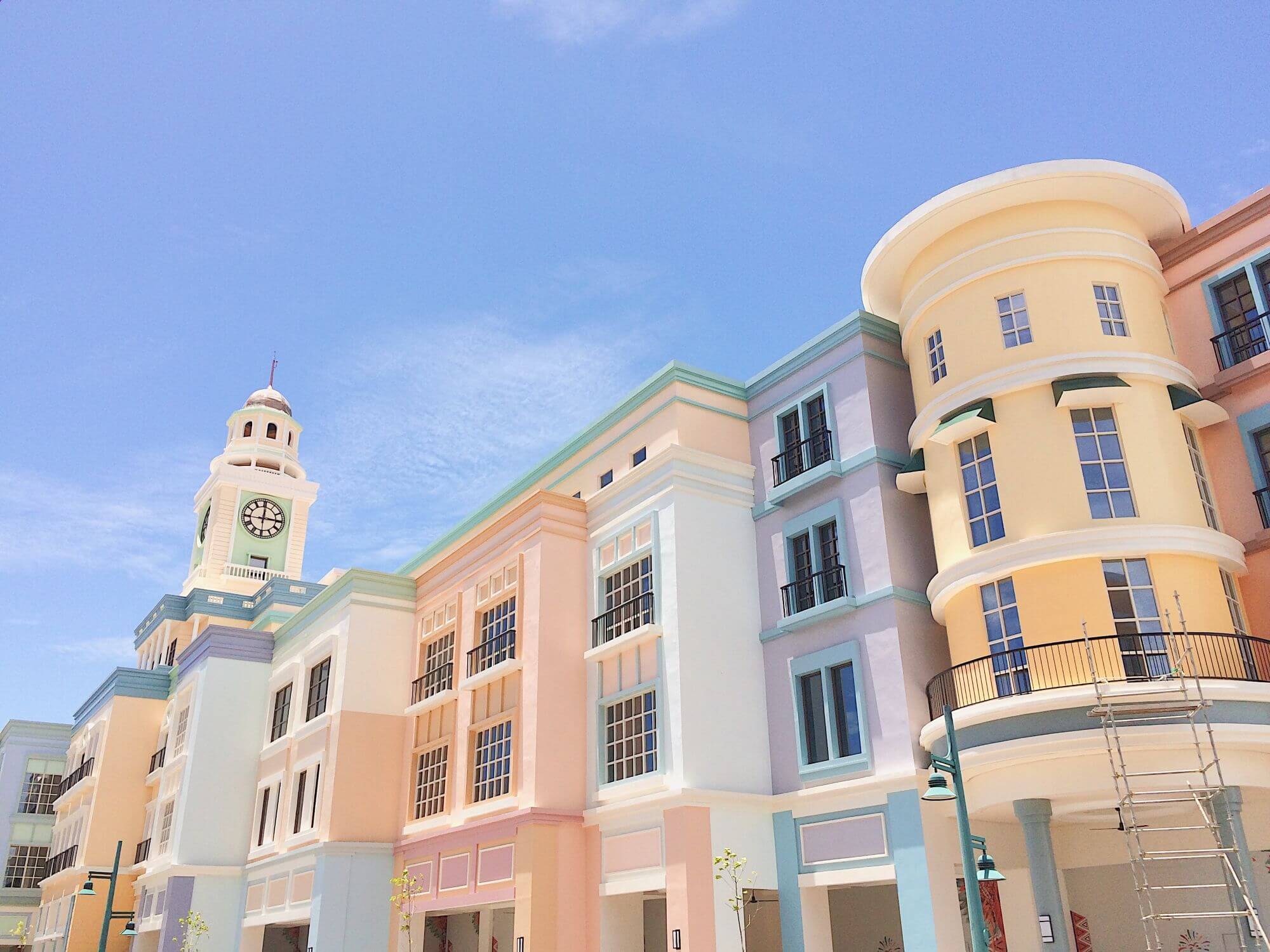
Iloilo City is located in the Western Visayas region of the Philippines. It is known as the city of love, probably for its renowned local hospitality and warmth. Ilonggos (people in Iloilo) are very hospitable and sweet and the city is rapidly becoming one of the best tourist destinations in the country.
Cost of living
Living costs are generally affordable, and retirees can find comfortable and reasonably priced accommodations.
| Expense | Cost (USD) |
| Rent (1 bed apartment) | $180-$290 |
| Rent (3 bed apartment) | $300-$360 |
| Monthly Cost (no rent / 1 person) | $520 |
| Monthly Cost (no rent / family of 4) | $1820 |
| Dining Out (2 people) | $13-$36 |
*Data updated: July 2023
Healthcare
Iloilo has a number of hospitals and clinics that provide quality healthcare services to both locals and tourists.
The main hospitals in Iloilo include the Western Visayas Medical Center, Iloilo Mission Hospital, and Iloilo Doctors' Hospital.
These hospitals offer modern facilities and medical technologies, and highly skilled medical professionals. There are also several clinics and health centers in the city, such as the Medicus Medical Center and The Medical City Iloilo.
Lifestyle
The city has good amenities and facilities, hospitals, shopping centers, and recreational areas. You can enjoy the city's well-maintained parks, river esplanades, and nearby beach resorts. The city is clean, safe, and very picturesque.
You can immerse yourself in history and explore architectural treasures such as the Miagao Church and Molo Mansion.
Iloilo is also home to the Dinagyang Festival, showcasing the region's cultural traditions.
Culinary enthusiasts will find Iloilo City to be a paradise. It is renowned for its diverse and delicious food scene, with iconic dishes such as La Paz Batchoy, pancit molo, and fresh seafood.
Exploring the local markets, food stalls, and restaurants is a delightful gastronomic journey.
Iloilo City offers a relaxed and laid-back lifestyle away from the hustle and bustle of larger cities. The city's slower pace allows retirees to enjoy a more tranquil and peaceful environment.
Oh, and the nearby islands are simply amazing, providing you with stunning weekend getaways.
5. Cebu City - the perfect blend of relaxation and fun
Another popular destination for foreign retirees is the province of Cebu, particularly in and around the city of Cebu.
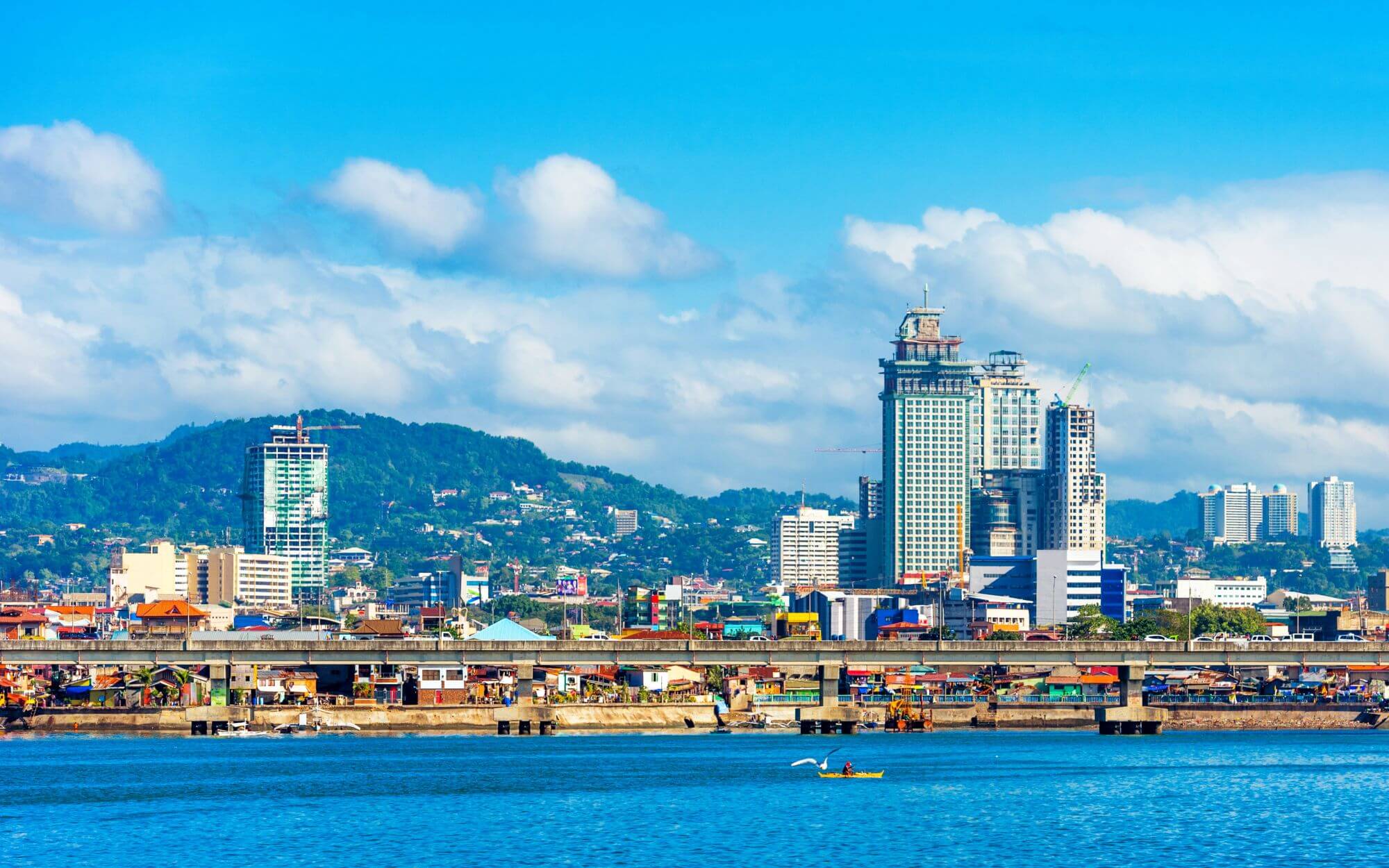
Cebu is a world-class beach destination. It offers all the amenities and bustling city vibes together with relaxed beachside living. It is also the oldest city in the Philippines.
Cost of living
Despite being an ex-capital city and a very popular destination for expats and tourists, Cebu City is quite affordable.
In popular areas like Ayala Center, IT Park, and Mactan Island, rents and living expenses are higher, but overall, Cebu is not outrageously expensive.
| Expense | Cost (USD) |
| Rent (1 bed apartment) | $270-$470 |
| Rent (3 bed apartment) | $470-$840 |
| Monthly Cost (no rent / 1 person) | $607 |
| Monthly Cost (no rent / family of 4) | $2130 |
| Dining Out (2 people) | $13-$30 |
*Data updated: July 2023
Healthcare
Cebu has a big network of public and private hospitals, specialty clinics, and other health facilities, including Cebu Doctors' University Hospital, Chong Hua Hospital, and Perpetual Succour Hospital.
The amount of investment coming into the health sector in Cebu is turning the city into a center for global medical tourism and a world-class haven for quality healthcare and wellness in the Far East.
Lifestyle
The province boasts beautiful beaches, a favorable climate, and a variety of leisure activities. It is a good combination of natural beauty and urban conveniences.
Cebu City is vibrant and lively but less hectic than Metro Manila while still providing modern infrastructure and facilities.
The city itself is very charming, with distinct Spanish influence in its history, architecture, and even cuisine. With its diverse religions, languages, and traditions, it's quite a melting pot and a great place to be if you are open-minded, curious and
The city is fastly developing and hailed as a new Hong Kong with many investors and new projects coming in, bringing more life and energy to the place.
Cebu is a mixture of the old and new. You can enjoy old buildings, museums, and carriages on Colon Street and then indulge in a shopping spree in one of the modern malls in Cebu Business Park or IT Park.
As in many big cities, public transport can be problematic, as well as traffic congestion. On the other hand, all the amenities and facilities are available to you: from endless entertainment options to shopping, restaurants, cinemas, concerts, and sports activities. Whatever you fancy, you will find it here.
The white sand beaches of Cebu are its biggest attraction, of course, as well as gorgeous mountains, waterfalls, and lakes.
6. Davao City- the safest place
Davao City, on the southern Philippine island of Mindanao, is often considered one of the safest cities in the Philippines. It has strict law enforcement measures and proactive community programs to prevent crime.
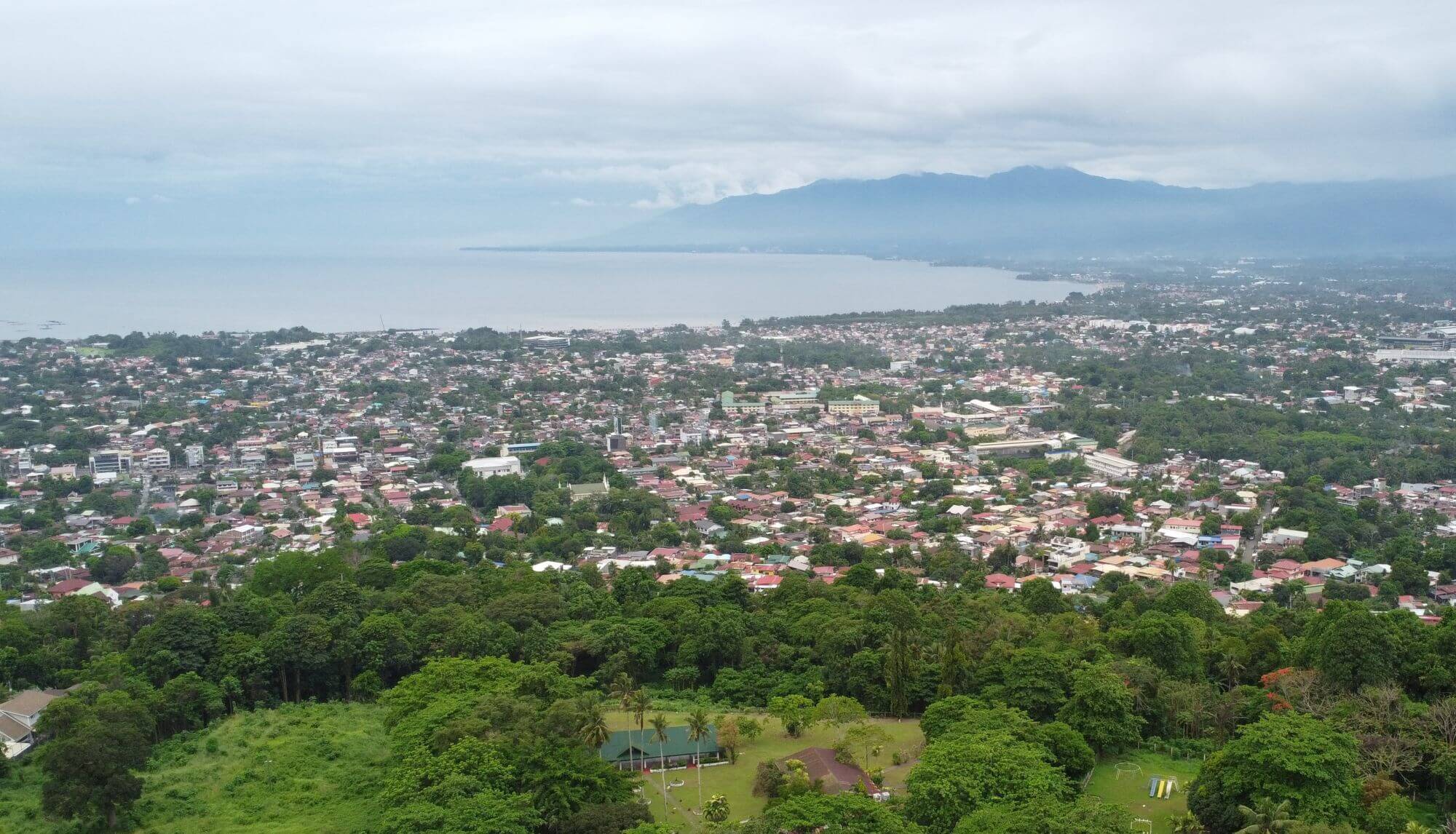
Having said this, it is still a city and a popular tourist destination, so reasonable safety precautions are still advised.
There is an active expat community in Davao, with many retirees from the United States, Europe, and other countries, mostly attracted by the breathtaking natural beauty of the place. And this is why some expats prefer Davao to Manila or Cebu: it is equally urbanized, but nature is much more accessible in Davao.
Cost of living
Davao City is quite affordable. It has relatively low living costs and a good quality of life, and this is exactly why the place is so attractive for expat retirees.
| Expense | Cost (USD) |
| Rent (1 bed apartment) | $155-$270 |
| Rent (3 bed apartment) | $295-$655 |
| Monthly Cost (no rent / 1 person) | $612 |
| Monthly Cost (no rent / family of 4) | $2140 |
| Dining Out (2 people) | $19-$64 |
*Data updated: July 2023
Healthcare
There's no shortage of quality healthcare facilities in Davao. The biggest hospitals include the Southern Philippines Medical Center, Davao Doctors Hospital, and San Pedro Hospital of Davao City.
There are numerous smaller hospitals, clinics, and health centers all over the city offering a variety of services, such as family medicine, pediatrics, and obstetrics and gynecology.
Lifestyle
The city is blessed with pristine white sand beaches that stretch along its coast, offering various water activities from chilling out on the sand to swimming, snorkeling, or diving and exploring the marine life beneath the surface.
Davao City is surrounded by mountains and forests, giving you a new world to explore. Mount Apo, the highest peak in the Philippines, is close to the city, providing hiking enthusiasts a challenging yet rewarding adventure.
The scenic landscapes, waterfalls, and abundant flora and fauna create a serene and peaceful atmosphere, perfect for a tranquil retirement and a connection with nature.
The city is well-maintained, and the infrastructure is well-developed, ensuring a comfortable and hassle-free lifestyle.
The Abreeza Mall in Davao City is a fabulous place to shop, dine and look out for some fun entertainment activities in the mall.
For something more exciting, visit The Roxas Night Market - a celebration of lights, tasty food, and local crafts.
People's Park in the city's center is great for your daily stroll, exercising, or spending time with a family.
7. Bacolod - the up-and-coming retirement destination
Metro Bacolod and the surrounding area have one of the largest growing expat communities in the Philippines. Expats flock to Bacolod, attracted by its 'rural but urban' lifestyle.
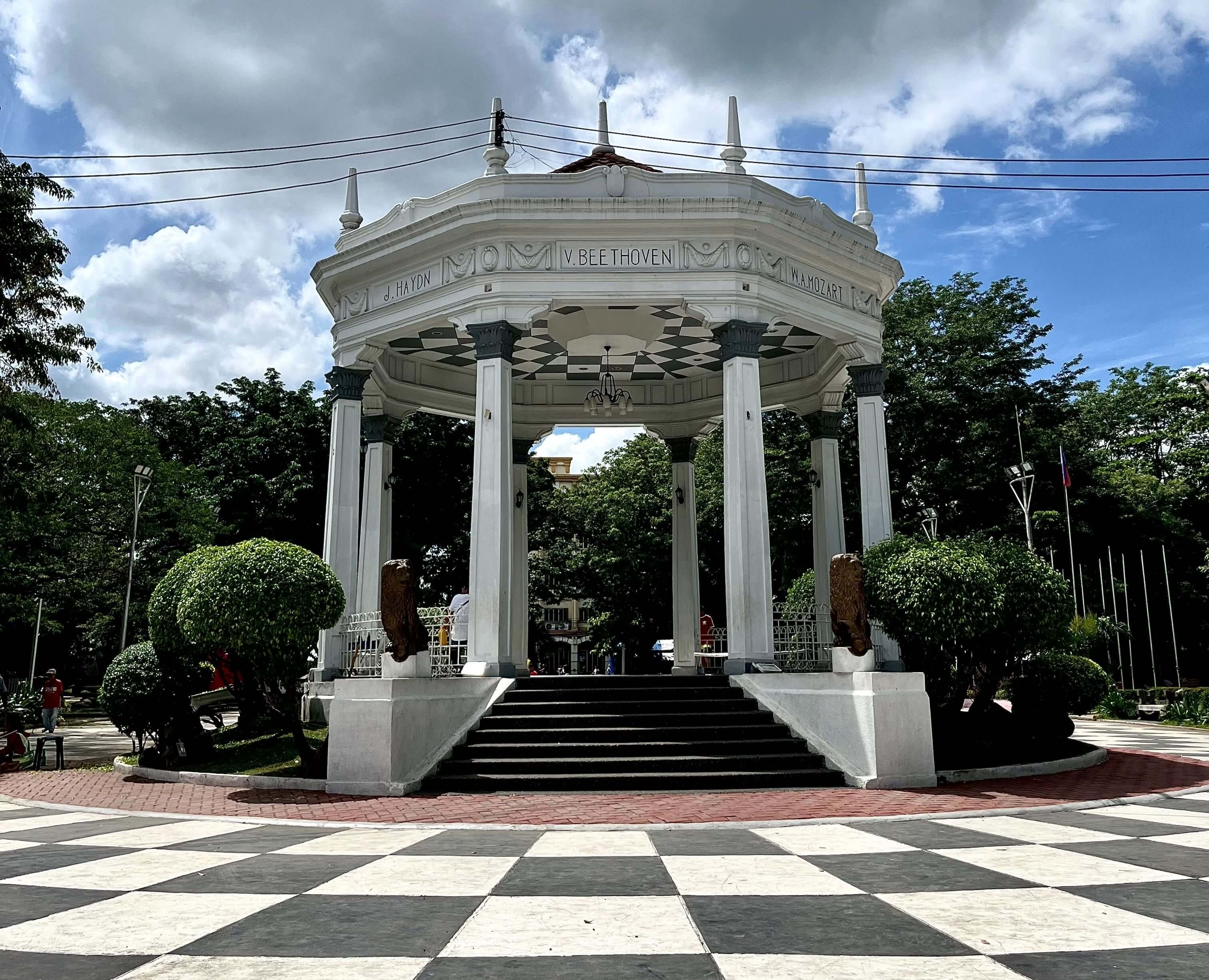
Cost of living
One of the standout aspects is the city's affordability. Even those on a modest retirement pension can comfortably afford the cost of living in Bacolod.
| Expense | Cost (USD) |
| Rent (1 bed apartment) | $180-$330 |
| Rent (3 bed apartment) | $390-$720 |
| Monthly Cost (no rent / 1 person) | $560 |
| Monthly Cost (no rent / family of 4) | $1950 |
| Dining Out (2 people) | $13-$55 |
*Data updated: July 2023
Healthcare
Here, you will have access to top-notch medical facilities and receive top-tier healthcare services when needed.
The biggest hospitals in Bacolod include the Riverside Medical Center Hospital, Corazon Locsin Montelibano Memorial Regional Hospital, and Bacolod Adventist Medical Center.
Secondary hospitals and clinics include Metro Bacolod Hospital and Medical Center, as well as the South Bacolod General Hospital.
Lifestyle
The city boasts a remarkably low crime rate and good air quality. Traffic congestion is also minimal, sparing residents from major transportation woes.
Moreover, expats can easily find their preferred food items, and a diverse array of international restaurants adds to the culinary delight beyond Filipino cuisine.
There's a lot of art, architecture, and history in Bacolod and nearby Silay. The best part is the seafood. It's fresh and cheap. Desserts and local coffee are great, also.
Exploring the rest of the province/island from Bacolod is easy. You can visit many mountain resorts or beaches, even just for a day trip. Iloilo/Panay is just an hour away by ferry. Dumaguete is 4-6 hours away by car or bus. You can go to Cebu by air (30 minutes) or land and sea (7-9 hours).
Being on the western side of the country, Bacolod is never as badly hit by storms as the eastern cities. It floods in some areas, but never as badly as in Manila.
8. Subic Bay - the most developed resort area
Nestled along the west coast of Zambales, Subic Bay, or just Subic for locals, presents a great mix of pristine beaches, lush forests, diverse wildlife, and modern facilities needed for a comfortable retirement.
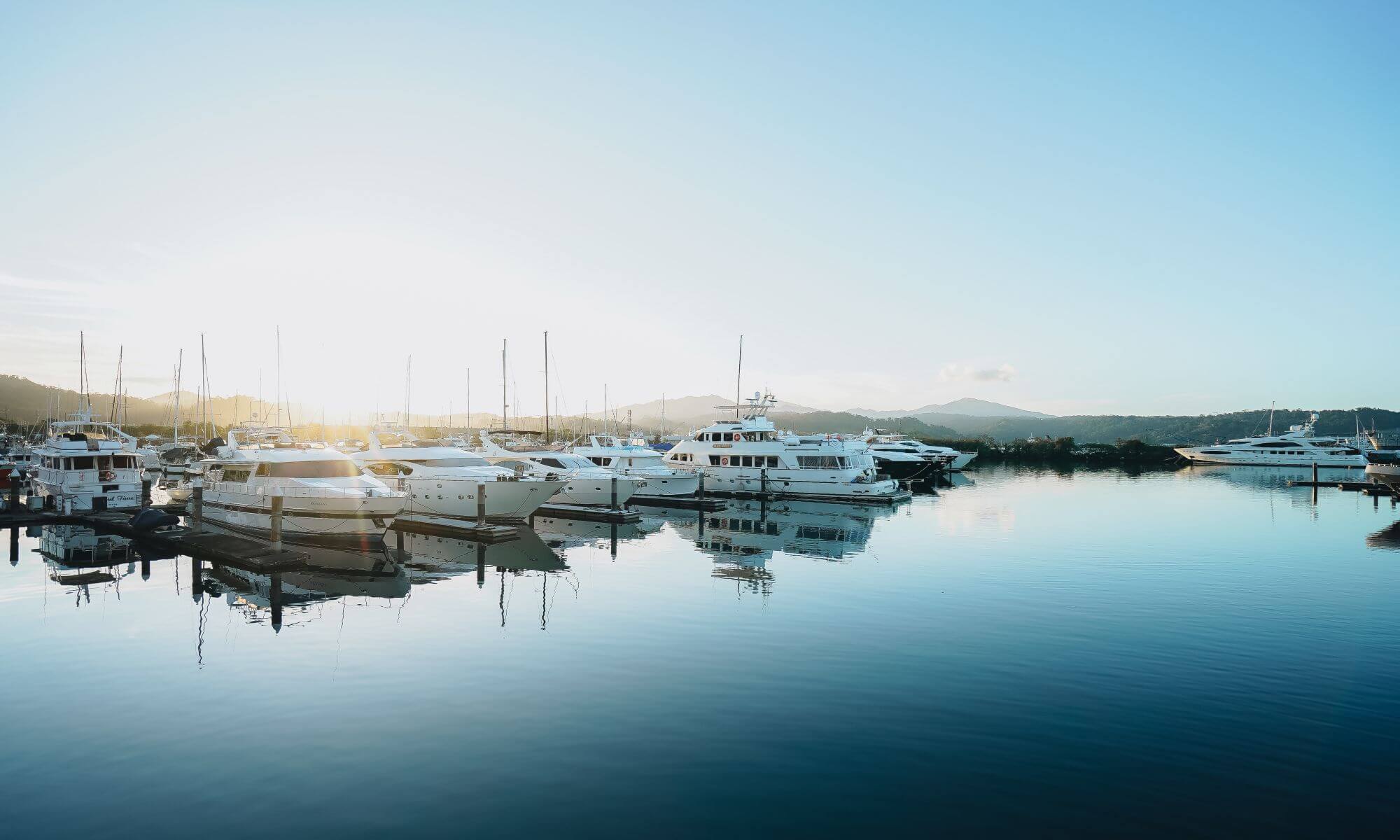
It is just a two-and-a-half-hour drive from Manila and is quite a lively spot with gorgeous beaches and an energetic commerce scene thanks to the Freeport Zone. Another benefit is that almost everyone here speaks English.
Cost of living
The cost of living in Subic Bay is higher than in other popular retirement hotspots of the country due to its position and popularity with Metro Manila residents.
| Expense | Cost (USD) |
| Rent (1 bed apartment) | $350-$400 |
| Rent (3 bed apartment) | $700-$900 |
| Monthly Cost (no rent / 1 person) | $580 |
| Monthly Cost (no rent / family of 4) | $1980 |
| Dining Out (2 people) | $15-$75 |
*Data updated: July 2023
Healthcare
The majority of the health facilities that residents of Subic Bay use are located in Olongapo City.
Here you will find Allied Care Experts (ACE) Medical Center, Totalmed Subic Hospital, St. Luke's Hospital, and others, including walk-in health centers, dental and other specialized clinics, pharmacies, and family doctors.
The ACE Hospital and Medical Center is the most popular among expats in the Zambales area. It's a private hospital that offers emergency, in and out-patient treatment, and surgical and general medical services.
Lifestyle
The bay and the nearby islands are famous for their pristine picture-perfect beaches, where you can bask in the sun, enjoy water activities, and witness breathtaking sunsets.
The Subic Bay Freeport Zone offers recreational opportunities, including golf courses, wildlife sanctuaries, eco-tourism sites, and great duty-free shopping. It's also where you can find all the facilities, including international schools.
The Central Business District in the Freeport Zone is where all the action happens. It is full of restaurants, cafes, entertainment options, and other amenities.
The expat community in Subic is welcoming and diverse, offering opportunities for socializing and making new connections.
It's a popular tourist area served by the Clark International Airport (CIA) and the Ninoy Aquino International Airport (NAIA). The CIA, situated northeast of Subic, is the closest option. On the other hand, the NAIA is located in Manila.
To learn more, visit our Living In Subic Bay guide.
9. Puerto Princesa - the best balance of urban and nature
Puerto Princesa is located in Palawan, which is often hailed as the world's best island, showcasing breathtaking natural wonders and pristine landscapes.
It's a big coastal city, but quite relaxed and with easy access to nature.
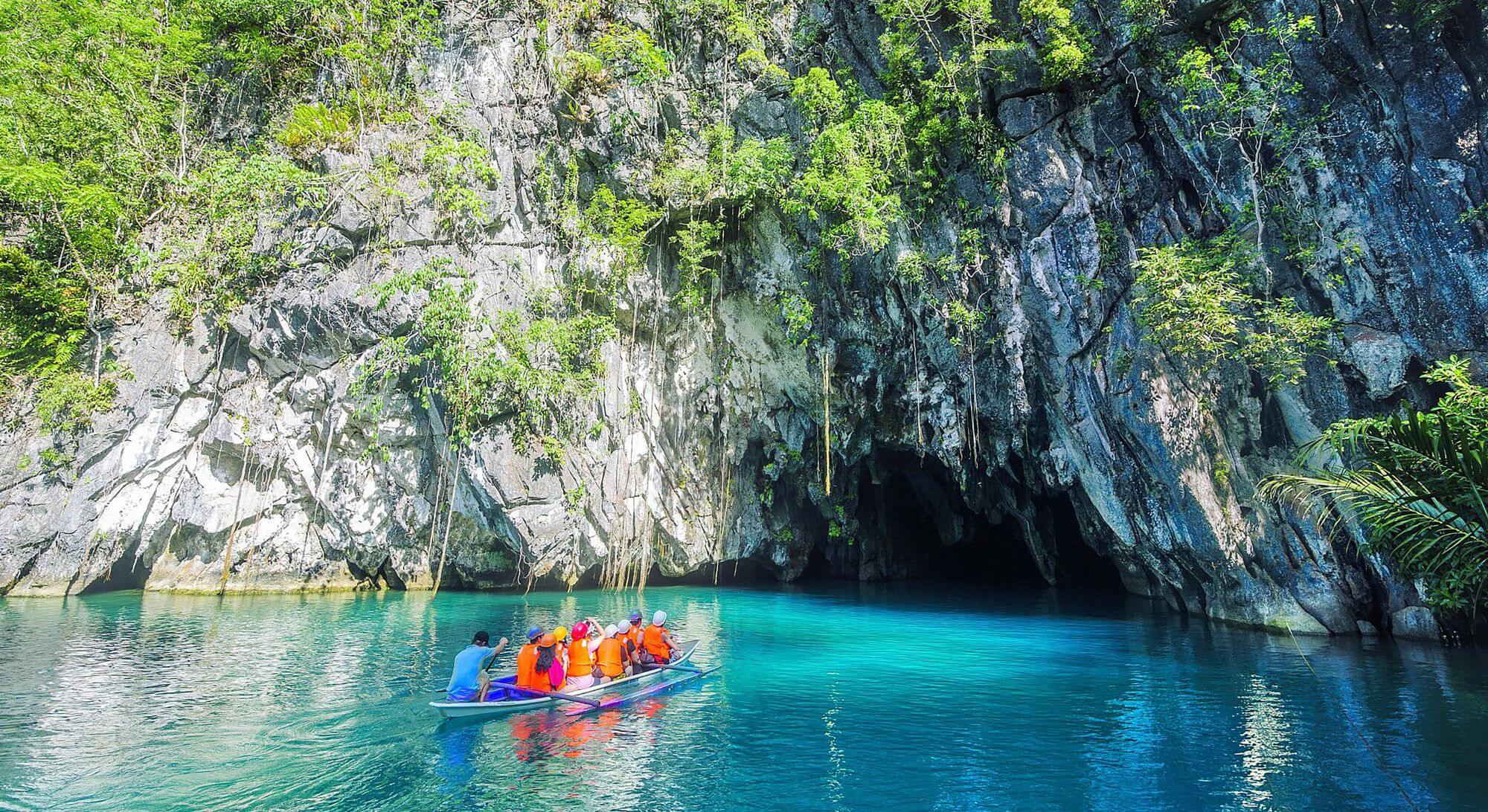
It's only an hour's flight from Manila or Cebu, and if you live anywhere near Puerto Princesa or in the city itself, then you have decent facilities nearby and a very affordable cost of living.
Cost of living
To live a good life in Puerto Princesa, you will need much less money than in Makati or Cebu.
| Expense | Cost (USD) |
| Rent (1 bed apartment) | $170-$210 |
| Rent (3 bed apartment) | $200-$360 |
| Monthly Cost (no rent / 1 person) | $530 |
| Monthly Cost (no rent / family of 4) | $1680 |
| Dining Out (2 people) | $22-$38 |
*Data updated: July 2023
Healthcare
The city is well provided when it comes to healthcare, with major hospitals such as ACE Medical Center Palawan, Provincial Hospital, Adventist Hospital Palawan, and Ospital Ng Palawan taking private patients.
A number of smaller specialized clinics and health centers are available all over the city.
Lifestyle
Puerto Princesa feels more like a hugely overgrown town rather than a real city: it's green and not very urbanized.
You won't find highly modern offices and business districts here or amazing technology hubs and an advanced urban lifestyle like in Manila or Cebu.
The city promotes sustainable tourism, preserving its environment while offering various recreational activities.
You can explore the pristine beaches of Honda Bay, go island hopping, or venture into the nearby rainforests and encounter exotic wildlife.
Snorkeling, diving, and boat tours are all available whenever you fancy exploring the marine ecosystems. The city also boasts eco-tourism sites like the Mangrove Paddle Boat Tour and the Butterfly Garden.
Puerto Princesa is home to the world-famous Underground River, a UNESCO World Heritage Site, and one of the New 7 Wonders of Nature.
Although big and sprawling (about twice as big as Delhi), the city is less urbanized than Manila or Cebu and doesn't get half as busy. It is also relatively safe.
However, it is very touristy. The city gets visibly quiet during the daytime as all the tourists are whisked away to the most popular sights. By nighttime, the cafes and bars get crowded and lively as the tourists are returned back and crave their potion of nightlife and entertainment.
SM City Puerto Princesa and Robinsons Place Palawan are two of the most popular shopping destinations in the area.
Puerto Princesa is well-connected. There are flights from Puerto Princesa to Manila (1 hour and 25 minutes), Clark in Pampanga (about 1 hour and 30 minutes), and Cebu in the Visayas (about 1 hour and 15 minutes).
10. Boracay - the ultimate island living
Boracay rivals Palawan as the most beautiful island in the world. If you want quiet and serenity, Boracay is the right place to be.
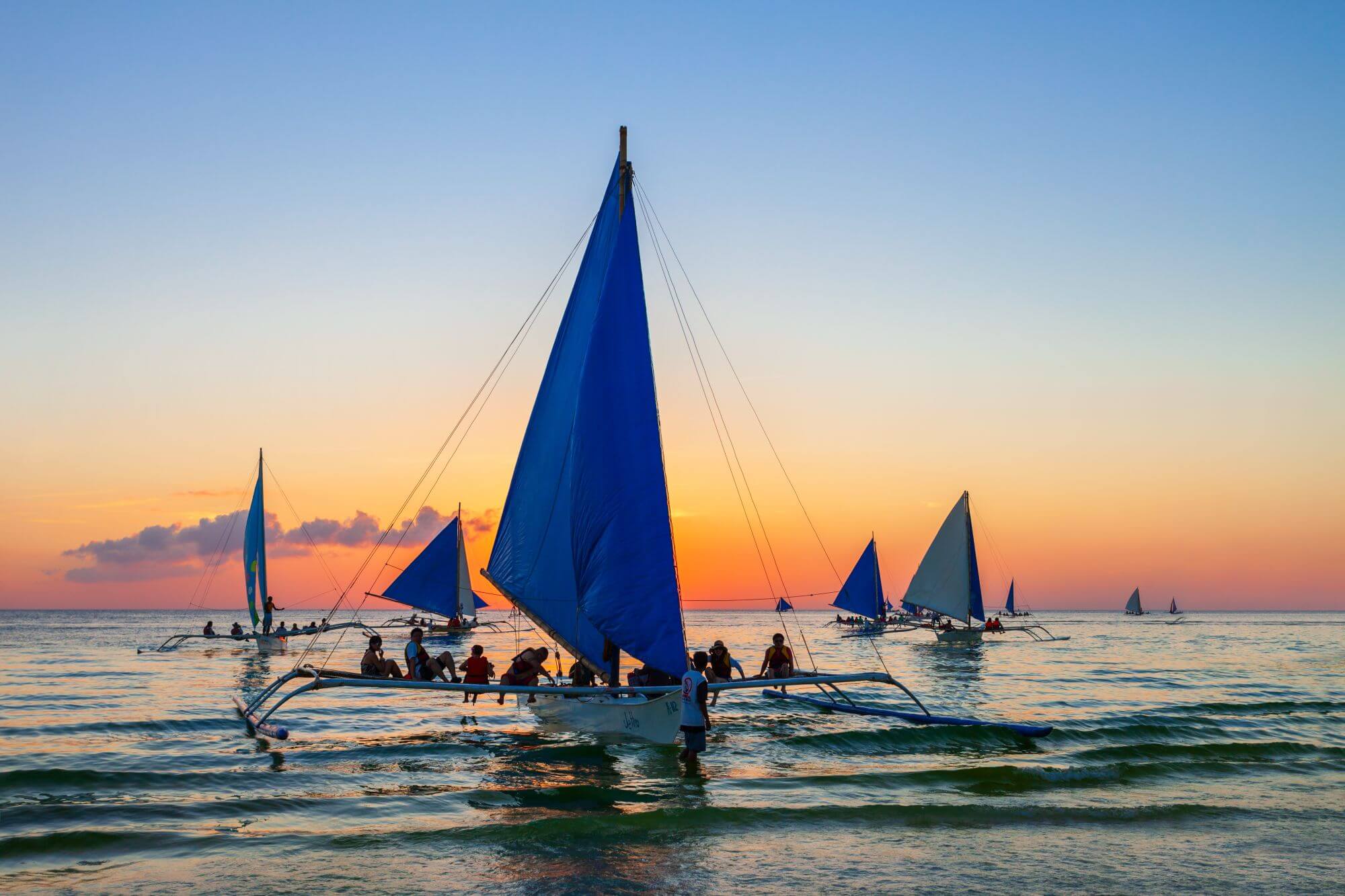
This island is perfect for a slow, stress-free, and soul-healing lifestyle that so many people seek in retirement.
Cost of living
The popularity of Boracay means it's not the cheapest destination in the Philippines. The island is tiny, only ten km², but it's a top tourist destination and is getting more and more popular with expats looking for a permanent place to live abroad.
And therefore, it is getting pricier by the day, especially for rentals.
| Expense | Cost (USD) |
| Rent (1 bed apartment) | $520 |
| Rent (3 bed house) | £3,300 |
| Monthly Cost (no rent / 1 person) | $580 |
| Monthly Cost (no rent / family of 4) | $1680 |
| Dining Out (2 people) | $22-$50 |
*Data updated: July 2023
Healthcare
Boracay has one hospital and several medical clinics.
While most minor medical issues can be addressed by doctors on the island, serious or emergency conditions may require transportation to Kalibo or Manila for proper medical care.
In the event of a serious medical emergency, local clinics can arrange medical transportation by land, air, and even internationally.
St. Gabriel's is a 24-hour primary care hospital on the island. It is equipped with X-ray and modern facilities and can deal with routine healthcare needs.
Ciriaco S. Tirol Hospital and a nearby Boracay Alert Medical Center also offer their services, as well as Scandi Medical Clinic and Metropolitan Doctors Clinics.
The main takeaway is that if you have complex health issues or need ongoing medical support (such as dialysis, for example), Boracay is not the ideal place for you. While all the minor issues can be dealt with at the available facilities, the more complicated cases can only be treated in Kalibo or Manila.
Lifestyle
It's a small island stretched over 7 km, and the narrowest part is just about 1 km wide, so you can easily stroll from one coast to the other.
White Beach, located along the west coast, is lined with palm trees, bars, and restaurants.
Bulabog Beach, situated on the east coast, is a popular spot for water sports due to strong winds.
You can see the whole island from an observation deck on Mount Luho - it's not big, but incredibly beautiful.
Retirees can enjoy a slow pace of life and the company of friends from various backgrounds. It's a peaceful place with no crime, making it ideal for a relaxed retirement.
For travel, the closest airports are in Caticlan and Kalibo, accessible by ferry.
To reduce travel costs, buy local flights ahead of time; it is generally cheaper, and several low-cost companies are available.
Final thoughts on the best places to retire in the Philippines
The Philippines is a stunning and diverse country, with many more locations beyond our top ten worth considering. You will find the wallet-friendly cost of living, tropical weather, and hospitable locals almost everywhere.
The main thing to remember is that adequate healthcare provision is crucial in retirement. Ensure your chosen location offers what you need, and do not forget to obtain health insurance.
To make sure you get the best value for money, compare international health insurance options from various providers to find the best deal.
Many retirees have found a perfect spot to relish their golden years in the Philippines. So why not join them? Remember, as the locals say, "Masaya sa Pilipinas!" (It's more fun in the Philippines!)
You might find helpful:
- Moving To The Philippines: practical advice and information to help you plan your move.
- Living In The Philippines For $1000 a month - is it possible?
- Best Countries To Retire In The World
- Cheapest Countries To Retire In The World
Secure Peace of Mind with Best-Value International Health Coverage
International Citizens Insurance provide free, no-obligation quotes from the leading international health insurance providers with plans tailored to meet your needs. Trusted by thousands of expats worldwide.




